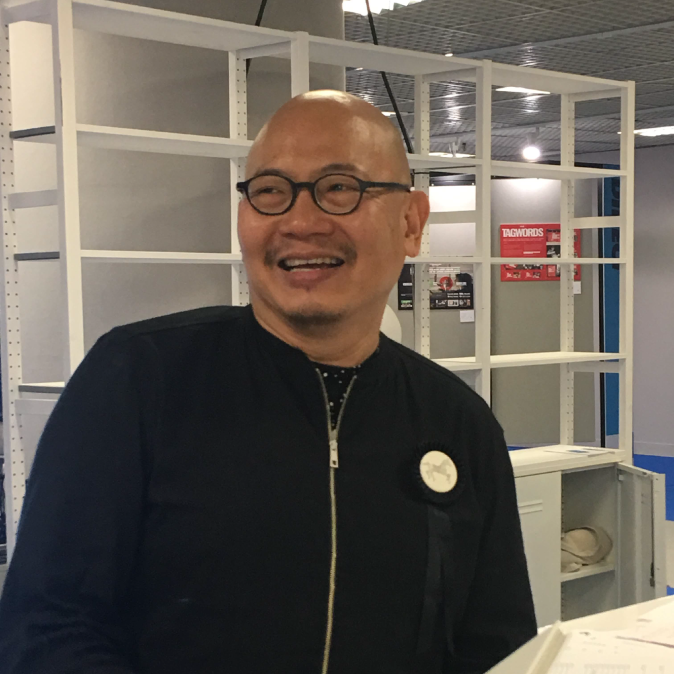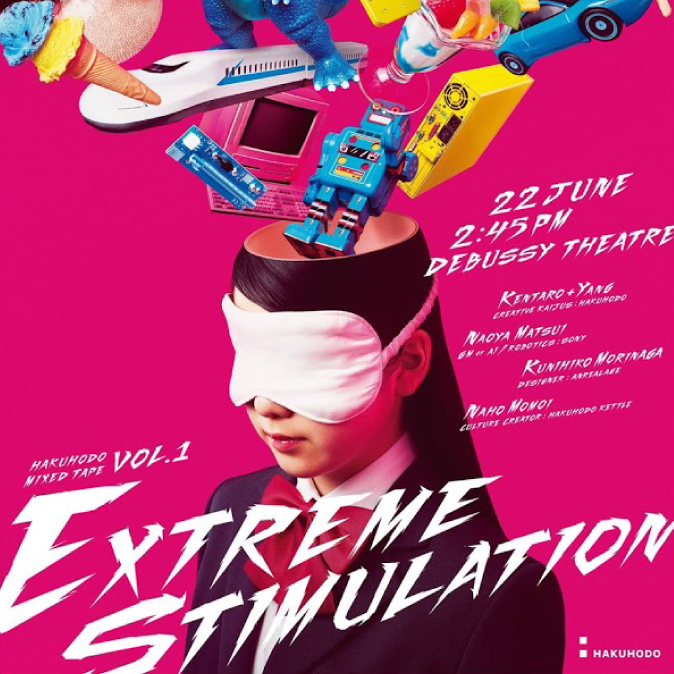- Viewpoints
- Awards

Yang Yeo is one of Hakuhodo Inc.’s Co-CCOs for APAC but he has adopted “Creative Kaiju” (=creative beast) for his official title, drawing inspiration from Japan’s movie monsters and internationally-known anime culture. The unorthodox title serves as an ice breaker for Yang in the industry, sparking curiosity and affording opportunities for him to talk about Hakuhodo and the company’s capabilities.
Yang took time out from his duties as a jury president at ADFEST 2019 in Pattaya, Thailand for a candid chat about his thoughts on Hakuhodo’s position as both a Japanese and global company.
What exactly does this Creative Kaiju do? Yang says his current role at Hakuhodo can be broadly divided into four main areas:
The first of these is client partnerships, and working with them to provide global presence and standards. The second and third roles relate to his internal work with Hakuhodo team members. He visits the companies’ overseas offices to assist with projects and pitches, and conduct seminars and training with staff. Moreover, he consults with and advises Hakuhodo’s executives on ways to make the company more global. Finally, Yang is continually helping to develop Hakuhodo’s international reputation, in terms of both the focus on people and the leveraging of technology.

Getting the job done faster by starting at the end
Japan’s corporate warriors are notorious for the amount of overtime they perform, and Yang encourages the rising generation at Hakuhodo to effect change by using their knowledge to work smarter, not harder. He says the best way to do this is to start from the endpoint and work back. “Japanese firms have to go through a process to get somewhere, but while they are trying to get through this process, they lose sight of the objective. So, be more result-oriented and less process-minded,” he advises.
“Think of the endpoint first and then plan your steps backwards. To get the result, for example, maybe you go from 1 to 4 to 7 to 10, and then you’re there. You don’t have to go from 1 to 10! It will bring you the same result, and you’ll be more refreshed and have more energy,” Yang explains.
As somewhat of an industry maverick himself, Yang knows it can be difficult to initiate change when those around you have been used to doing things a certain way. He says that the key point here is communicating closely with team members and clients so that they can understand the value of what you’re trying to achieve.
“A lot of people do things without explaining, and then others might just think you’re a difficult person!” he chuckles. “Avoid peer pressure, or pressure from clients and look at the path—what steps you need to take, and what you don’t need to do. If you already know you don’t have to go through the entire process, then you need to explain to those with whom you’re working about why you can miss out some of these steps.”
He also advocates obtaining concrete feedback from clients about the results of a campaign, in order to judge if it is truly successful. “I want everybody to know that the results are important. An industry award is not a benchmark!” he cautions. “People still need to know about your campaign.”
Forget what you think you know—a fresh start for each new project
Coming up with fresh ideas is challenging in an industry that is constantly reinventing itself, and where successful work is bound to attract imitators. Based on past experience, the Creative Kaiju’s advice is to “walk in stupid,” leaving your previous ideas and what you think you know at the door. “When you are ‘empty-headed’ you are more curious, and you want to know things. You start asking questions and you don’t use the same formulas over and over again,” he points out.
Yang suggests considering each project as a new challenge with new solutions to be found. “I don’t think you should come in and say, ‘I used this for another client and it was very successful.’ Every client, every brand is going to be different.” He adds that expecting all the members of one’s creative team to come up with new ideas will also help them feel valued and committed to the project.

In terms of his own career, Yang has no regrets and there is nothing he wishes he had done differently along the way. “Of course, there were a lot of things I could have done better, but those experiences have made me a better person and a good manager. So I wouldn’t exchange what I’ve gone through for anything else.”
Looking ahead at the big picture for Hakuhodo going forward, Yang is keen to see the company retain its quintessential Japanese character and values, while sharing them in a way that will work on a global level. “I need it to be a highly innovative, unique, results-oriented company that has an international point of view but with Japanese sensibilities.”
As Yang points out, Japan has a lot to offer and the world is eager to embrace it. “Everyone loves Japan, right?” he says with a smile. “The food, the onsen (hot spring baths), the autumn leaves, the culture… and at the same time, you get robot restaurants, the latest technology, the wonderful service, the packaging, the design… mysterious and magical!”
Yang would like Hakuhodo to draw on all of this to create an aura which will spark interest and attract clients. “So, they come to us and they think that Hakuhodo is mysterious and magical, but we must also continue to create impact around the world,” he points out. “There’s a lot about the creative design that people love. They come to Japan to be inspired so we need to bring that out.”
According to this Creative Kaiju, Hakuhodo doesn’t have to change in order to try emulating overseas companies; it needs to bring its corporate and national culture to the world in a way that the rest of the world can appreciate, and therein lies the challenge.

















